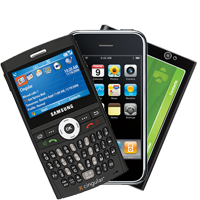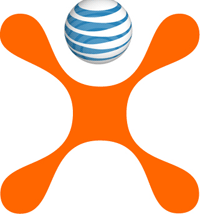Palm readings – vital signs decreasing. User death imminent. Or something of that nature. That’s pretty much what I hear any time I see any news about PalmOS platform. There is a poster hanging on one of the subway stations I pass, promoting some Palm device (I think it’s Palm Centro Red Smartphone, from Sprint) as a socializing platform, poster with hot girls having fun and all. I don’t know if any such (hot and geeky enough) girls exist, but the hot girls I know own RAZR. Or Sidekick. Or iPhone. Not even the Blackberry. They don’t know what PalmOS platform is, and they couldn’t care less.
And that’s the problem with PalmOS platform – not the lack of hot and geeky girls, of course, but the lack of marketing. When I first got my hands on my first PDA – it was Palm III, I think – it was the hottest thing in town. I adored my little baby and was loudly complaining that I want my cell phone integrated into the blessed thing. My prayers were answered years later, but it was the different device on a different platform already.
The first blow that Palm delivered was the paid upgrade to PalmOS 3.5. It wasn’t whole lot of money, but it was expensive enough to go cautiously – which I did at that time. All the hottest commercial software titles somehow were requiring version 3.5 as well. I didn’t want to invest in the outdated hardware, so instead I started saving for new device – and found an incredible deal that landed me an iPaq (color Windows mobile device) nearly free. Turned out the iPaq was the hottest kid on the block by that time and Windows CE became almost ubiquitous – unlike gray and black Palms that started to fade away. Besides, the familiar concept of a file system, somewhat skipped by PalmOS, was all the way back in WinCE, which introduced the familiar Windows interface (I later on figured what old PalmOS looked like – it looked exactly like stripped down TI-92 scientific calculator).
Everyone and their mothers were after WinCE devices, and another thing that Palm was missing was the sex appeal. Palm devices just weren’t appealing anymore – to any crowd, corporate or casual. Despite being cheaper (or maybe because of that) they looked like an ‘uncool’ alternative to cool PDAs (after all – when did we, consumers, refuse to pay for an expensive cool gadget?).
The platform itself may not be all that bad – I’ve seen college students put full blown Java development environments on their Palms to develop apps. Those apps, however, weren’t in demand, because the devices weren’t all that hot anymore. At that time it still wasn’t too late to save the platform. Maybe opening up would have worked, or some sort of remarketing, appealing to a different audience – we will never know. Then RiM came about and Palm lost its last foothold.
Sorry attempt to jump on the bandwagon of mobile computer (I am referring to Foleo here) might have worked, if company was a little braver. After all, who would want to lug around a PDA phone AND its “companion” (and a laptop). I was happy enough to get rid of mp3 player when I got my music in my PDA phone. Ditching the phone for the one integrated into PDA – and you got yourself a good deal of space savings.
To wrap up the thought here, I must say that Palm once again missed the opportunity to get back in business – at least before Android. Now it’s so late that the word “palm” should get back its original meaning – front side of the hand. Especially that modern mobile devices so much smaller, better and – sexier.
 US cellular providers are starting to wake up to popular demand and bringing some more attractive hardware stateside. This, however, brings another problem for uneducated consumers – which cell phone to buy? Should I get a smartphone? Or
US cellular providers are starting to wake up to popular demand and bringing some more attractive hardware stateside. This, however, brings another problem for uneducated consumers – which cell phone to buy? Should I get a smartphone? Or  It’s been in the works for quite some time. AT&T, in fact, did announce that they are expanding their 3G/HSDPA network and other good things will come to those who wait. However, last couple of weeks I did experience some cell service outage and started thinking that moving to AT&T’s GSM network wasn’t, probably, the best idea. Today, however, I was very much surprised, when while standing on a subway platform in Brooklyn instead of regular
It’s been in the works for quite some time. AT&T, in fact, did announce that they are expanding their 3G/HSDPA network and other good things will come to those who wait. However, last couple of weeks I did experience some cell service outage and started thinking that moving to AT&T’s GSM network wasn’t, probably, the best idea. Today, however, I was very much surprised, when while standing on a subway platform in Brooklyn instead of regular